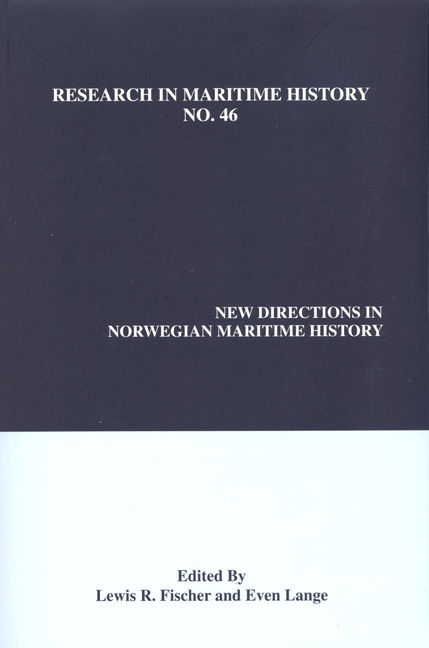Book contents
- Frontmatter
- Contents
- About the Editors
- Contributors' Notes
- Introduction
- Global Integration
- Political Issues
- Success and Failure
- “International Maritime Trade Politics and the Case of Norway, 1948-1990”
- “Inheriting Strategies: Understanding Different Approaches to Shipping during the World War I Boom in Haugesund, Norway”
- “Why Did They Fail? Business Exits among Norwegian Shipping Companies since 1970”
- “Little Man, What Now? Company Deaths in Norwegian Shipping, 1960-1980”
“Why Did They Fail? Business Exits among Norwegian Shipping Companies since 1970”
from Success and Failure
- Frontmatter
- Contents
- About the Editors
- Contributors' Notes
- Introduction
- Global Integration
- Political Issues
- Success and Failure
- “International Maritime Trade Politics and the Case of Norway, 1948-1990”
- “Inheriting Strategies: Understanding Different Approaches to Shipping during the World War I Boom in Haugesund, Norway”
- “Why Did They Fail? Business Exits among Norwegian Shipping Companies since 1970”
- “Little Man, What Now? Company Deaths in Norwegian Shipping, 1960-1980”
Summary
Introduction
Between 1970 and 1987, the population of Norwegian shipping companies was considerably diminished. About two-thirds of the companies with ships registered in Norway that existed in 1970 were no longer operating in 1987. The reduction in the number of shipping firms was particularly strong during the years before 1980 and the three years prior to 1987. According to Stig Tenold, the majority of the firms that exited withdrew from shipping because of weak markets and poor incomes. Moreover, most of them were small.
The high turnover among shipping firms, however, has not been a unique Norwegian phenomenon. Ioannis Theotakis and Gelina Harlaftis demonstrate that in Greek shipping as well a large number of shipping firms and shipowners have exited the industry. As in Norway, the businesses that left were mainly small. At the same time, the Greek-owned fleet has been characterized by a steady entry of new shipowners and companies, creating a dynamism which has spurred both technological and organizational innovations.
The large number of departures from Norwegian shipping was a result of the general crisis in shipping which spanned much of the 1970s and 1980s. The causes of this crisis and how it affected the population of Norwegian shipping firms have been well analyzed elsewhere. In this article, I want to go behind the general picture and study in more detail why and how some specific shipping firms failed to continue. Was the general shipping crisis the main reason for their failure? Or were the exits the outcome of inadequate strategic responses to the challenges and problems it caused? To what extent did the failures result from firm- or owner-specific factors, possibly interacting with the difficult economic conditions in the shipping markets? These are some of the central questions posed in this study. In order to answer them, I have chosen to examine four medium-sized shipping companies that exited from shipping during the 1980s and the 1990s. All were well-known firms that had been founded in the first half of the twentieth century. They operated in different markets, though, and thus represent the breadth of Norwegian shipping. Business failures are seldom studied by either business or maritime historians. This article may thus contribute new knowledge to both disciplines.
- Type
- Chapter
- Information
- New Directions in Norwegian Maritime History , pp. 199 - 232Publisher: Liverpool University PressPrint publication year: 2011



